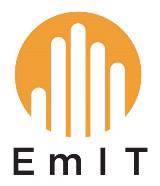


The ELASTIC3S Project (Embodied Learning Augmented through Simulation Theaters for Interacting with Cross-Cutting Concepts in Science) strives to create a new genre of technology-enhanced interactions for education with the development of "simulation theaters for embodied learning" that target crosscutting themes in STEM such as scale, patterns, and rates of change. This NSF-funded project seeks to understand how high school students’ can use full body movement to interact with simulations of scientific phenomena such as earthquakes, acidity/basicity, and climate change. Using advanced gesture recognition techniques and video-game-like simulations we are creating engaging learning environments where students can explore the connections between different science topics.
Team Members

Robb Lindgren
robblind@illinois.edu
ELASTIC3S Co-Investigator

Jina Kang
jinakang@illinois.edu
ELASTIC3S Investigator; Learning Analytics

James Planey
planey@illinois.edu
ELASTIC3S Graduate Researcher
Former Team Members

Jose Mestre
ELASTIC3S Co-Investigator and Physics Education Researcher

Guy Garnett
ELASTIC3S Co-Investigator, Composer, and HCI Researcher

Jason Morphew
Assistant Professor at Purdue University

Mike Junokas
Manager, Computational Science, Ag Systems

Nitasha Mathayas
Postdoctoral Researcher at Indiana University

Greg Kohlburn
Advanced Software Engineer, Relativity

Nicholas Linares
Game Designer at Dimensional Ink; Adjunct Faculty at USC
.jpg?sfvrsn=338d3aa6_3)
Sahil Kumar
Senior Data Science Engineer at Blue Cross and Blue Shield

Ben Lane
Software and Game Developer
Publications
Lindgren, R., Morphew, J. W., Kang, J., Planey, J., & Mestre, J. P. (2022). Learning and transfer effects of embodied simulations targeting crosscutting concepts in science. Journal of Educational Psychology, 114(3), 462–481. https://doi.org/10.1037/edu0000697
Kang, J., Diederich, M., Lindgren, R., & Junokas, M. J. (2021). Gesture patterns and learning in an embodied XR science simulation [pdf]. Educational Technology & Society, 24(2), 77-92. https://www.jstor.org/stable/27004933
Lindgren, R., Morphew, J. W., Kang, J., & Junokas, M. J. (2019). An embodied cyberlearning platform for gestural interaction with cross-cutting science concepts [pdf]. Mind, Brain, & Education, 13(1), 53-61. https://doi.org/10.1111/mbe.12191
Junokas, M. J., Lindgren, R., Kang, J., & Morphew, J. W. (2018). Enhancing multimodal learning through personalized gesture recognition [pdf]. Journal of Computer Assisted Learning, 34(4), 350-357. https://doi.org/10.1111/jcal.12262
Kang, J., Lindgren, R., & Planey, J. (2018). Exploring emergent features of student interaction within an embodied science learning simulation [pdf]. Multimodal Technologies and Interaction, 2(3), 39-58. https://doi.org/10.3390/mti2030039